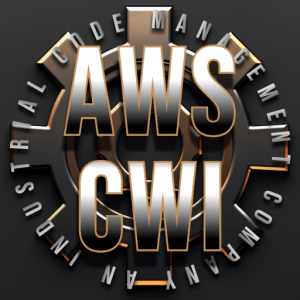Exploring the Value of Welding Inspection in Industrial Applications: Protecting Against Failures and Enhancing Durability
Welding evaluation works as a vital line of defense in commercial applications, making sure the architectural honesty and reliability of bonded components. By methodically recognizing problems such as porosity and insufficient fusion, assessments not just prevent failures however likewise extend the lifespan of vital properties. Following market requirements enhances both security and functional effectiveness; nonetheless, the ramifications of neglecting these techniques can be serious. As we analyze the diverse advantages of routine assessments, it becomes apparent that recognizing these characteristics is not simply an issue of conformity but a critical imperative for longevity and risk reduction.
Duty of Welding Inspection
Welding assessment acts as a critical safeguard in commercial applications, making sure that welded structures meet defined standards of quality and security. This process involves a systematic assessment of welds to verify their integrity, strength, and conformity with established codes and requirements. The role of welding assessment is complex, incorporating both visual analyses and non-destructive testing techniques, which may consist of ultrasonic, radiographic, or magnetic particle testing.
Effective welding inspection identifies potential concerns early, minimizing the danger of devastating failures that can emerge from insufficient welds. By ensuring that welds are carried out according to make specifications, examiners contribute to the total structural dependability and durability of elements in vital applications, such as pressure vessels, pipelines, and structural structures.

Typical Welding Flaws

One of the most common flaws is porosity, characterized by little gas pockets trapped within the weld steel. This happens as a result of contaminants or incorrect protecting gas, endangering the weld's stamina. An additional considerable defect is incomplete blend, where the weld metal falls short to bond appropriately with the base product, potentially bring about structural weaknesses.

Cracks can also develop during or after the welding procedure, often credited to thermal stress and anxieties or inappropriate cooling prices. Furthermore, undercutting, where the base metal is eroded along the weld bead, can damage the joint and is typically caused by extreme heat input or inaccurate method.
Furthermore, absence of penetration occurs when the weld steel does not reach the origin of the joint, resulting in insufficient toughness. Recognizing these typical flaws is vital for welders and inspectors alike to make sure that welded structures fulfill safety and efficiency standards, eventually stopping potential failings in commercial applications.
Advantages of Routine Evaluations
Normal evaluations offer as a critical safeguard in guaranteeing the reliability and longevity of welded structures. These assessments determine potential problems and weak points that might jeopardize the integrity of welds, enabling prompt remediation before issues rise. By carrying out an organized assessment routine, companies can dramatically decrease the risk of disastrous failings that might lead to expensive downtime, equipment replacement, and even crashes.
Additionally, normal examinations contribute to improved top quality control throughout the welding process. By sticking to a consistent inspection schedule, companies can guarantee that their welding methods fulfill well established high quality benchmarks and best techniques. This not just fosters a culture of accountability yet also encourages continuous enhancement among welding personnel.
Furthermore, normal examinations help with far better maintenance preparation. By identifying damage early, organizations can purposefully arrange repairs and substitutes, reducing disturbance to procedures. This positive method ultimately leads to extensive possession lifespan and improved total performance.
Last but not least, a dedication to normal evaluations can improve a company's credibility in the market. Stakeholders and customers progressively value companies that focus on safety and top quality, consequently enhancing depend on and possibly causing enhanced service opportunities.
Market Requirements and Regulations
Following market requirements and laws is a basic element of welding inspection that enhances the benefits of normal evaluations. These criteria, developed by organizations such as the American Welding Society (AWS) and the American Society of Mechanical Engineers (ASME), offer a framework for ideal practices in welding procedures, materials, and inspection techniques. Conformity with these regulations ensures that welds fulfill the required high quality and security benchmarks, considerably lowering the risk of structural failures.
Regulative bodies like the Occupational Safety And Security and Health And Wellness Management (OSHA) additionally enforce guidelines that shield employees and the setting during welding procedures. By complying with these established criteria, markets can boost the integrity of their components and structures, ensuring they carry out as intended under different operational problems.
In addition, adherence to industry requirements cultivates uniformity in quality control, facilitating smoother interaction amongst stakeholders and regulatory agencies. This alignment not only reduces liability dangers yet additionally enhances the credibility of companies in open markets. Welding Inspection Gilbert Arizona. Eventually, compliance with welding requirements and policies is not just a legal obligation; it is an try this important financial investment in safety and security, performance, and long-lasting operational success
Future Trends in Welding Assessment
As sectors proceed to evolve, the future of welding examination is poised to integrate advanced innovations that boost precision and effectiveness. Among the most considerable fads is the adoption of automation and robotics in assessment processes. Automated systems can conduct inspections swiftly, lowering human mistake and boosting throughput in manufacturing settings.
Moreover, the integration of artificial knowledge (AI) and machine understanding algorithms will enable anticipating analytics, enabling for real-time evaluations and aggressive upkeep. By assessing information from previous assessments, these modern technologies can identify patterns that might indicate possible failings, consequently expanding the life expectancy of welded elements.
Additionally, non-destructive testing (NDT) techniques are anticipated to end up being much more sophisticated, utilizing devices such as drones and self-governing automobiles outfitted with innovative sensors. Welding Inspection Gilbert Arizona. These developments will certainly boost the capability to inspect hard-to-reach or unsafe locations without jeopardizing my review here security
Furthermore, the trend in the direction of digitalization will lead to enhanced information management systems that facilitate better monitoring, reporting, and conformity with industry requirements. In recap, the future of welding examination is identified by technological developments that promise to considerably enhance dependability, safety, and operational performance in different commercial applications.
Final Thought
Finally, welding inspection serves an important feature in making certain the stability and durability of welded frameworks throughout numerous commercial applications. By identifying defects such as porosity and insufficient fusion, routine inspections play a considerable role in danger mitigation and quality control. Adherence to sector criteria and laws further enhances functional safety and security and reliability. As improvements in modern technology remain to develop, the future of welding examination assures raised accuracy and efficiency, inevitably adding to the longevity of essential frameworks.
Welding assessment serves as a crucial line a fantastic read of defense in industrial applications, making certain the structural integrity and reliability of bonded components.Welding inspection serves as a critical guard in commercial applications, ensuring that welded frameworks satisfy defined standards of high quality and security. Inevitably, the function of welding examination is vital in advertising security, improving performance, and shielding financial investments in commercial infrastructure.
These standards, developed by companies such as the American Welding Society (AWS) and the American Society of Mechanical Designers (ASME), offer a framework for finest techniques in welding procedures, products, and evaluation methods.In conclusion, welding examination serves a vital function in making sure the honesty and longevity of bonded structures throughout numerous commercial applications.
Comments on “The Ultimate Checklist for Welding Inspection Gilbert Arizona: Ensuring Safety and Precision”